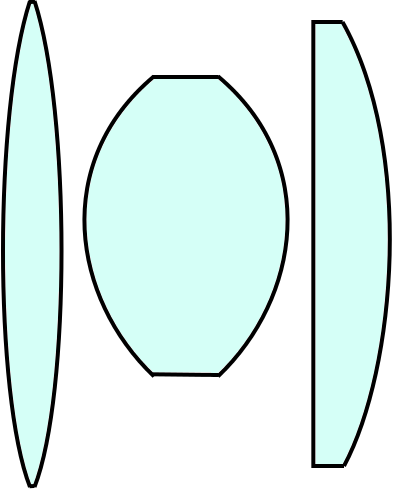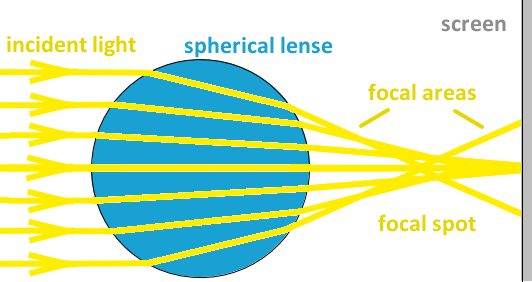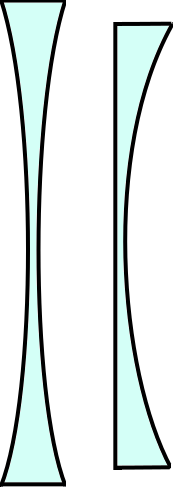Lenses
Objects with a uniform, round surface are called lenses, if they deflect light in certain ways. Normally, lenses consist of glass or transparent plastic. On the one hand lenses must be as transparent as possible so that light can pass through well. On the other hand they must have a refractive index which is different from the refractive index of their surrounding medium. The functional principle of a lens is based on the fact that light is refracted. But the rays of light are each refracted at the boundary of the media while entering and leaving the lens.
Depending on the shape of the lens, it deflects the incoming rays of light either in a way that they come together behind the lens or that the go apart. Thus one distinguishes between converging lenses and diverging lenses.
Converging lenses


Rays of light, which pass through a converging lens, are refracted in a way that they converge more strongly after the lens. If parallel rays of light hit the lens, they cross each other behind the lens. As represented in the picture above, the light is bundled behind the lens so that you can see focal areas on a screen behind the lens. Because of the lens more light than before hits the screen there.
Every lens has got a certain distance which is called focal point. Most of the parralel, incoming rays of light are focussed onto one single point there. How precise the lens can focus the light onto one single point also depends on the shape of the lens. If the body of the lens is too flat or too round, it does not have a clear focal point but a slightly bigger focal area.
Diverging lenses


Inwardly curved lenses are called diverging lenses. Because of their shape the light is deflected in such a way that they diverge more widely through the lens. If paralell rays of light hit a diverging lens, they will be refracted at the boundary of the media so that they diverge behind the lens.
